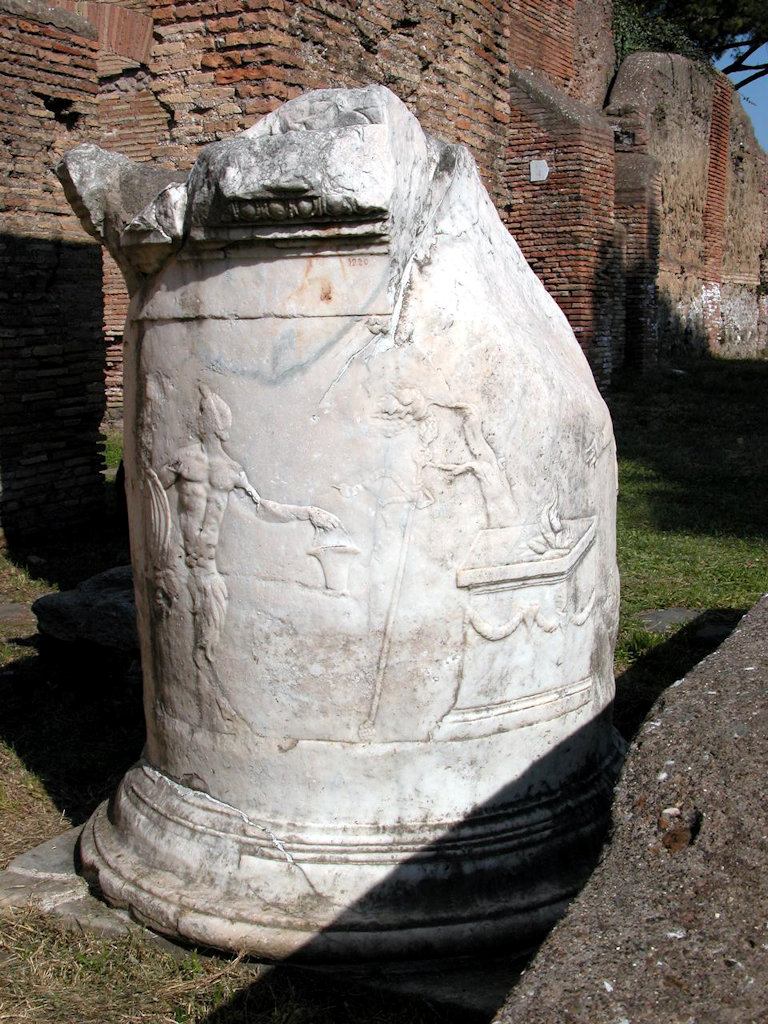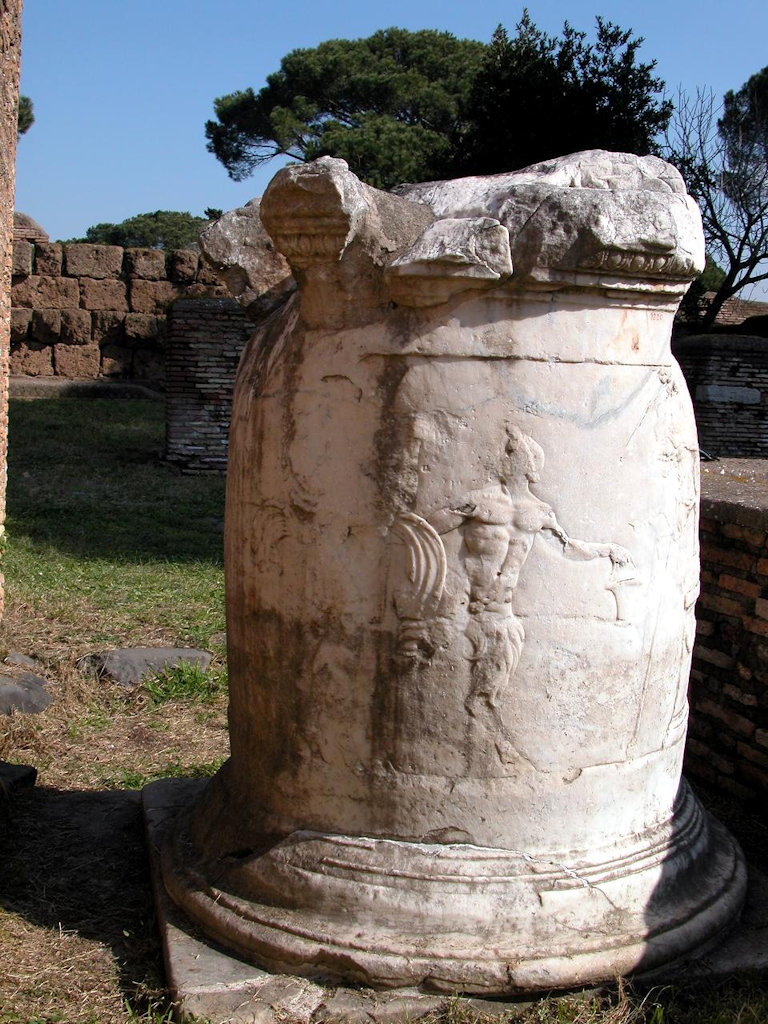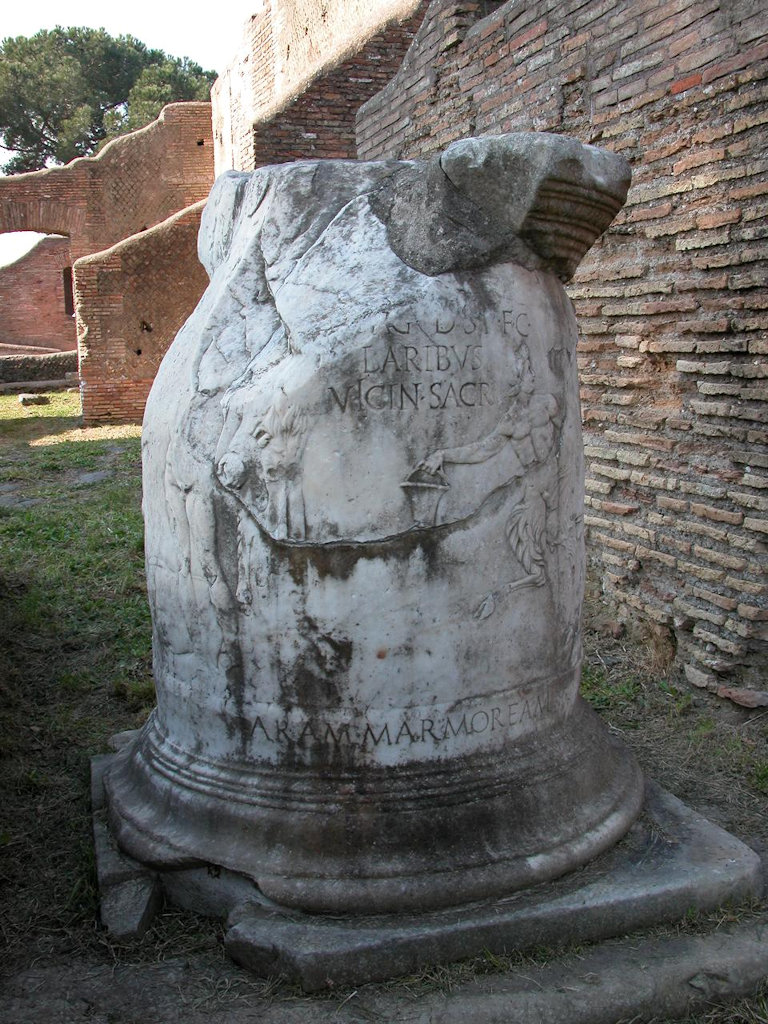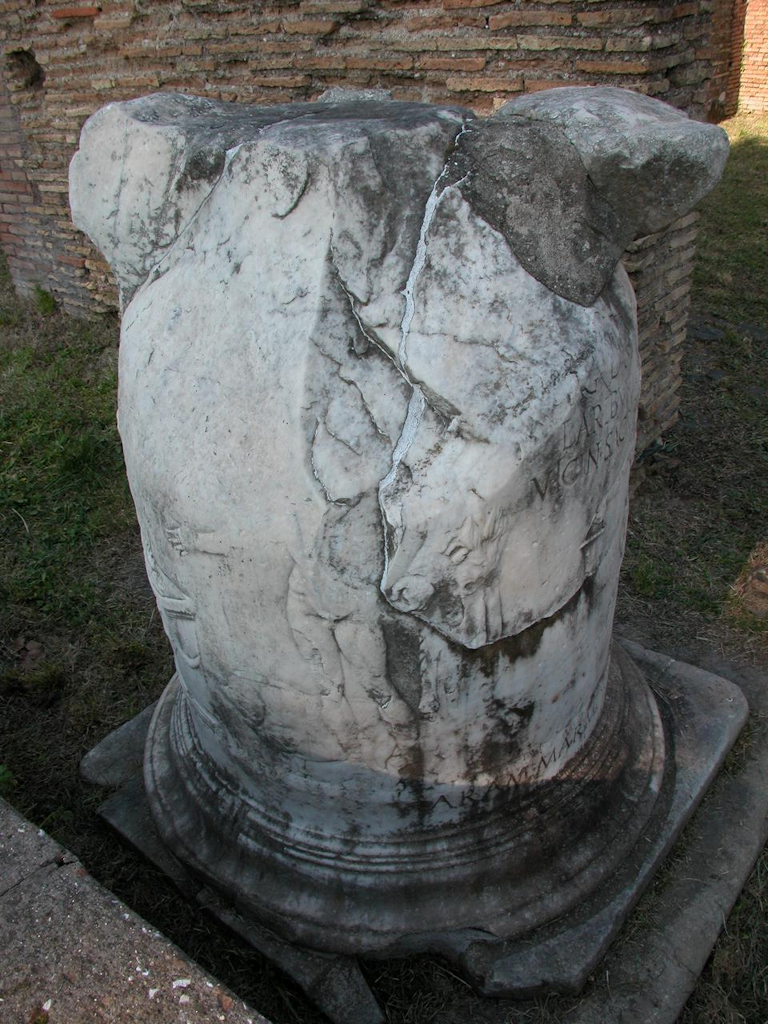Round compitum altar (1220)
Found on Piazza dei Lari.
Date: late-Augustan or Claudian. H. 1.35, diam. 0.88. The altar is resting on a marble slab (1.15 x 1.03; h. 0.07), on top of a large marble block (1.80 x 1.80; h. 0.47), laid upon a large travertine block (2.15 x 2.15; h. 0.26).
According to the inscription the marble altar was dedicated to the Lares by one or more magistri. The Lares are called Lares Vicinales, Vicinis, or Viciniae, "of the vicus, of the neighbourhood". All around the altar is a relief. The central scene is made up of a square altar, decorated with a garland and bucrania and with a fire on the top. To the right of the altar is Hercules. His head is missing. He stretches his empty right hand out towards the altar in an inviting gesture, from his left arm the lion-skin is hanging down. In his left hand must have been the club, but this is no longer recognizable. Behind him is a pig, with a ribbon around its body. Behind the altar is a tree, with a hairy object at the end of one of its branches. Against one of the other branches leans a thyrsus. There are two almost identical lateral scenes. On either side of Hercules Pan is seen. The Panes move towards Hercules and hold a situla. They are looking back at a dancing Lar. One hand of the Panes is behind the Lares and they are therefore apparently leading the latter towards the altar. The attributes of the Lares are lost. The altar was at some point in time mutilated, presumably by Christians.




|
[---m]AG(ister/istri) D(e) S(ua) P(ecunia) F(aciendam) C(uravit/uraverunt) LARIBVS VICIN(alibus/is/iae) SACR(am) ARAM MARMOREAM |
Floriani Squarciapino 1952. Bakker 1994, 118-120, 243-246. EDR106132. Photos: Digital LIMC.